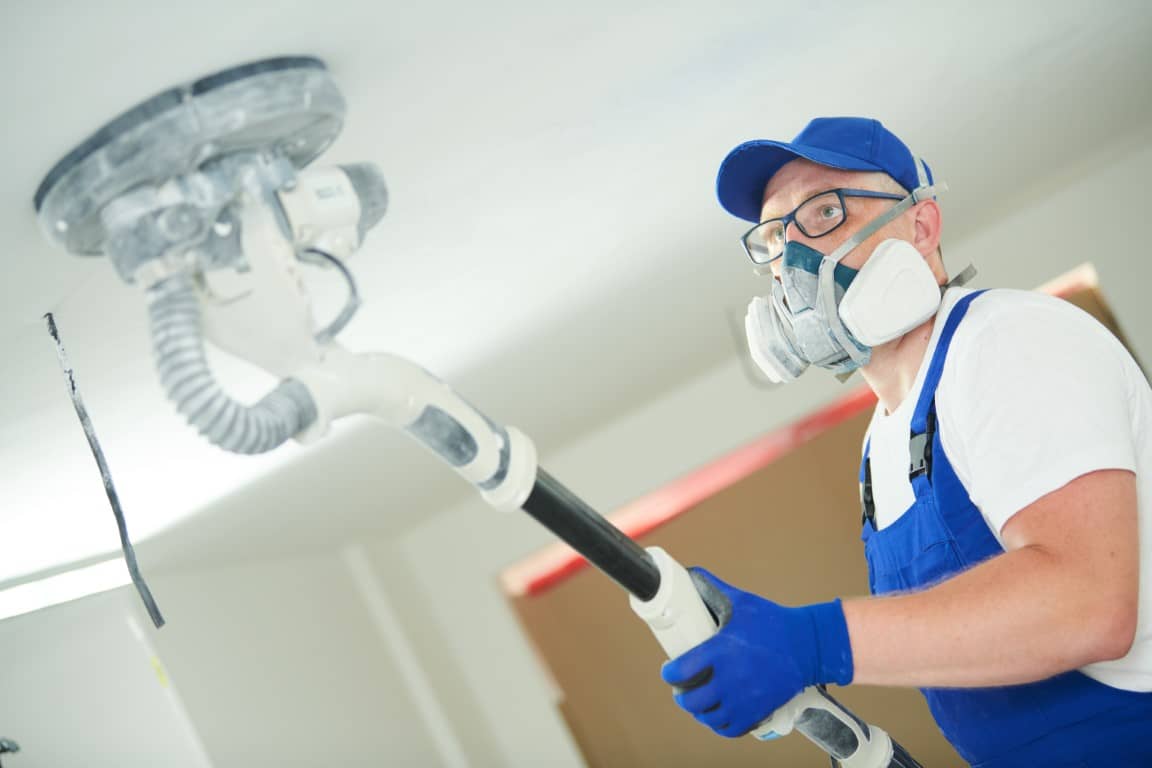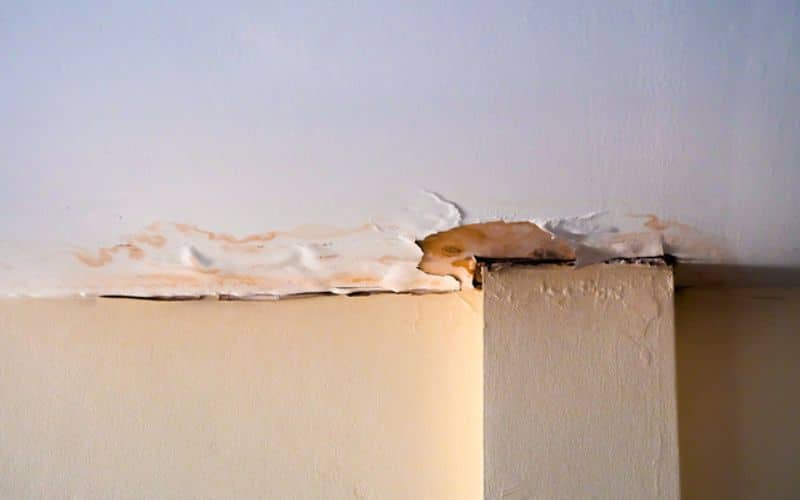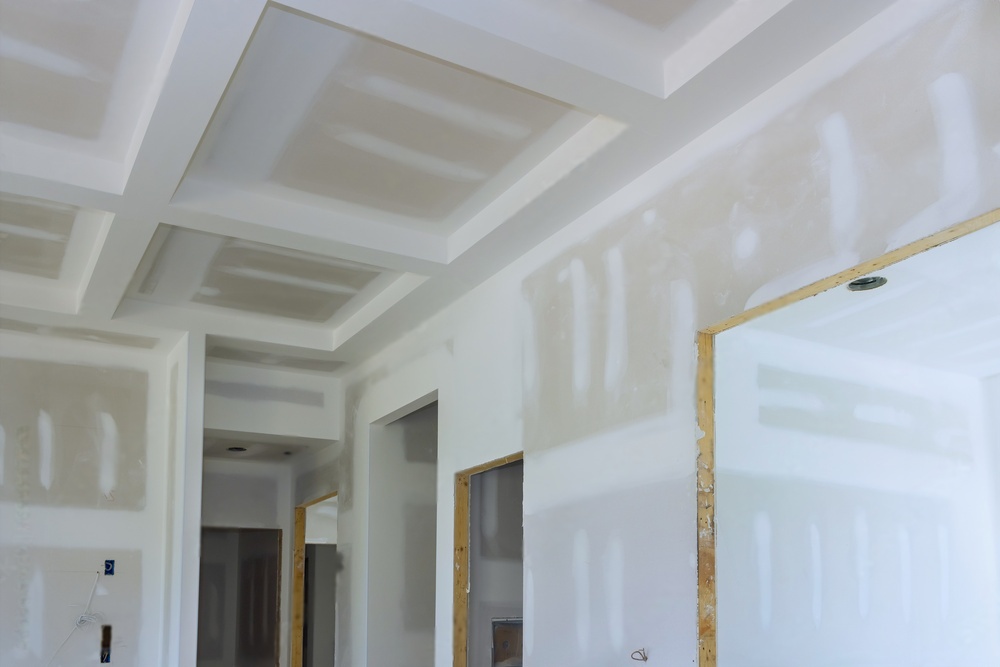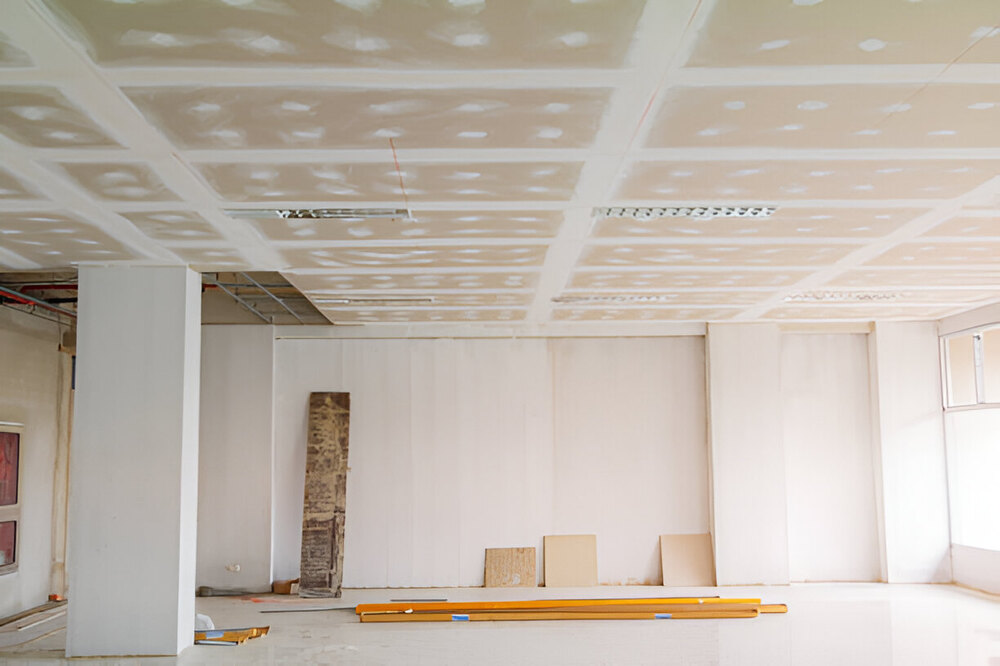Soundproof Drywall Installation
Renovating a space or building a new construction – soundproofing has become the norm of the century. So how do you do soundproofing with drywall installation? We will guide you toward the basics of soundproof drywall installation, the essentials of soundproofing with the help of drywall, the necessary materials required for this purpose, its methods, and the best techniques to achieve soundproofing for any space.
Why is there an increase in demand for soundproofing homes in Edmonton, AB?
With rapid urbanization, noise pollution has become a major headache for many residents in the Edmonton neighbourhood. This causes interruptions in daily lives and affects the quality of work. Whether in a residential or a commercial area, soundproofing can be a very good and effective way to create a healthy and peaceful environment.
Why Use Drywall for Soundproofing?
The effectiveness of drywall in soundproofing is due to its sturdiness and the ability to add other layers. It also provides weight to the wall, and sounds cannot easily penetrate through it, hence reducing sound transmission. Its versatility can be matched with such items as insulation, resilient channels, or acoustic compounds that will produce excellent soundproofing outcomes.
Materials Needed for Drywall Soundproofing
Standard Drywall
Standard drywall can give some measure of sound attenuation because of its thickness but is usually most effective when it is backed by other sound insulation products.
Soundproofing Drywall
Soundproofing drywall installation involves hanging the drywall panels with care and properly sealing and securing them to prevent sound leaks. Using acoustic sealant around the edges of the panels can further improve the soundproofing effectiveness.
Double-Layered Drywall
This approach involves placing two layers of drywall that use a soundproofing compound (Green Glue) to boost the level of soundproofing.
Other Soundproofing Materials
Following are some other materials that are also needed for soundproof drywall installation:
- Mass Loaded Vinyl (MLV)
- Acoustic Sealant
- Resilient Channels
- Insulation
Process of Soundproof Drywall Installation
Assessing Your Soundproofing Needs
Generally, the number and type of sources of noise have to be assessed to decide on the soundproofing strategy. Whereas a residential space may not need as much soundproofing as a commercial area, getting to know the source of noise helps in this aspect.
Preparing the Space
Start by cleaning and preparing the wall area that will require the installation of the drywall. Peel off any objects that could be hanging or stuck on the wall, and take time to clean the wall surface.
Installing Insulation
Seal up the gaps between the wall studs to minimize the amount of sound that passes through the wall cavity. This step also applies to sound absorption and works best to make the most impact on soundproofing efforts.
Applying Resilient Channels
Install resistant channels sideways to the wall studs. These channels create a void that separates the drywall from the studs so that sound cannot pass through directly.
Installing the First Layer of Drywall
Fasten the first layer of drywall to resilient channels with screws, but do not screw into the studs, as this would give up the decoupling principle.
Adding Soundproofing Compound
Between the first and second layers of dry walls, install a soundproofing compound known as Green Glue. This compound reduces sound waves as they try to penetrate the wall in a house through vibration.
Installing the Second Layer of Drywall
Apply the second layer of drywall, staggering the seams with the first layer, as this minimizes sound transmission paths and enhances insulation.
Sealing Gaps and Edges
Applying acoustic sealant on the edge, junction, and anywhere else where sound could pass through minimizes the efficiency of soundproofing.
Finishing Touches
The last step of completing the soundproofed drywall is to add an additional coat of paint or, preferably, wallpaper to match with the available decor.
Common Mistakes to Avoid
- Incomplete Sealing: Failing to seal edges or gaps allows sound to leak through, compromising the soundproofing.
- Incorrect Screw Placement: As much as possible, when installing resilient channels to retain the decoupling action, do not screw into wall studs.
- Overlooking Insulation: Soundproofing is not complete without acoustic insulation, which prevents sound from entering the wall cavity.
Maintenance and Upkeep
Soundproofing maintenance must be done frequently to enjoy the results for a long time.
- Regular Inspections: It is recommended that potential or evident signs of wear and tear on the house, specifically the drywall or insulation, be inspected periodically.
- Reapplying Acoustic Sealant: Acoustic sealant may wear out and should be checked regularly for any signs of weakness to avoid the emergence of sounds that leak through the walls.
- Monitoring for Moisture: Unwanted moisture will also harm the drywall and the insulation, so one should be vigilant and fix any problems noticed.
Benefits of Soundproofing with Drywall
There are the following benefits of soundproof drywall installation:
- Improved Living Environment: Noise isolation by drywalls means minimizing external noises and producing a noise-free and calm environment.
- Improved Privacy: Acoustic panels help keep out sound that is coming in and going out, which is handy on a party wall or in a business environment.
- Increased Property Value: Houses with soundproofed walls are in high demand and give builders a competitive advantage owing to the customers’ desire for quiet spaces.
Advanced Soundproofing Techniques
- Double Stud Walls: Laying two rows of wall studs with openings between them can minimize sound transmitted to adjacent spaces, which is essential in areas requiring superior sound isolation.
- Staggered Stud Walls: This way, you don’t necessarily have to use a double wall, as there are methods of getting the sound definition by merely placing the studs in a certain pattern.
- Floating Floors and Ceilings: For that reason, insulation or resilient channels in floors and ceilings provide better soundproofing and decoupling solutions.
Soundproof Drywall Installation by Drywall Edmonton LTD
Investing in professional soundproof drywall installation is essential for creating a comfortable, private, and valuable space. Quality soundproofing reduces unwanted noise and upgrades your environment into a peaceful haven when the right materials and techniques are applied. If you’re ready to enjoy a quieter space, consult the experts at Drywall Edmonton LTD.
Schedule a consultation today, and let us craft a customized soundproofing solution that meets your needs. Make noise reduction a reality with our specialized drywall Insulation Edmonton for a better living or working experience.









